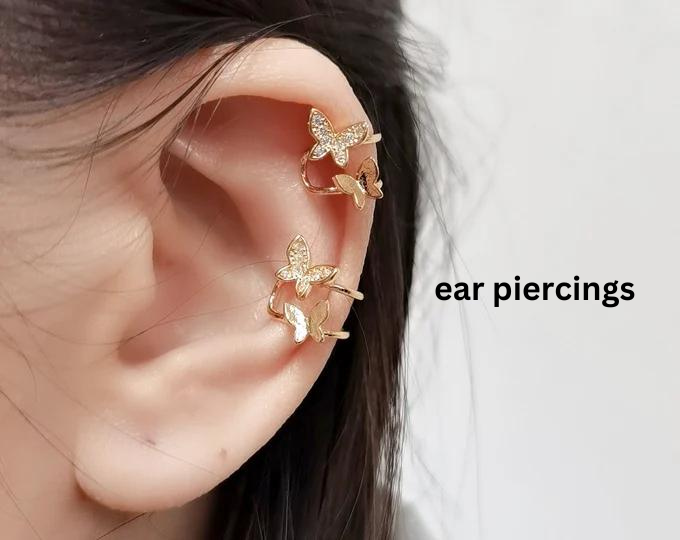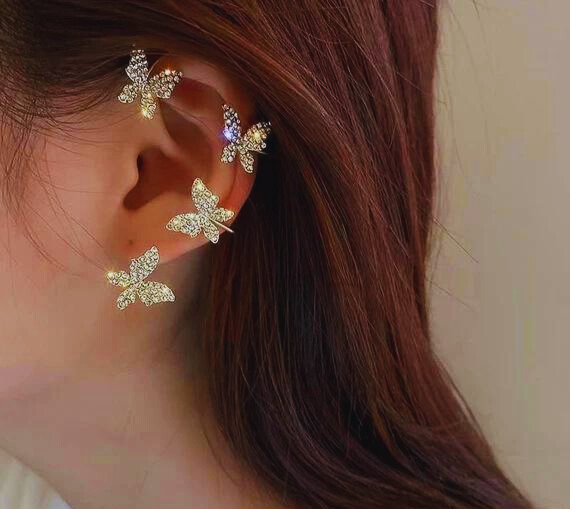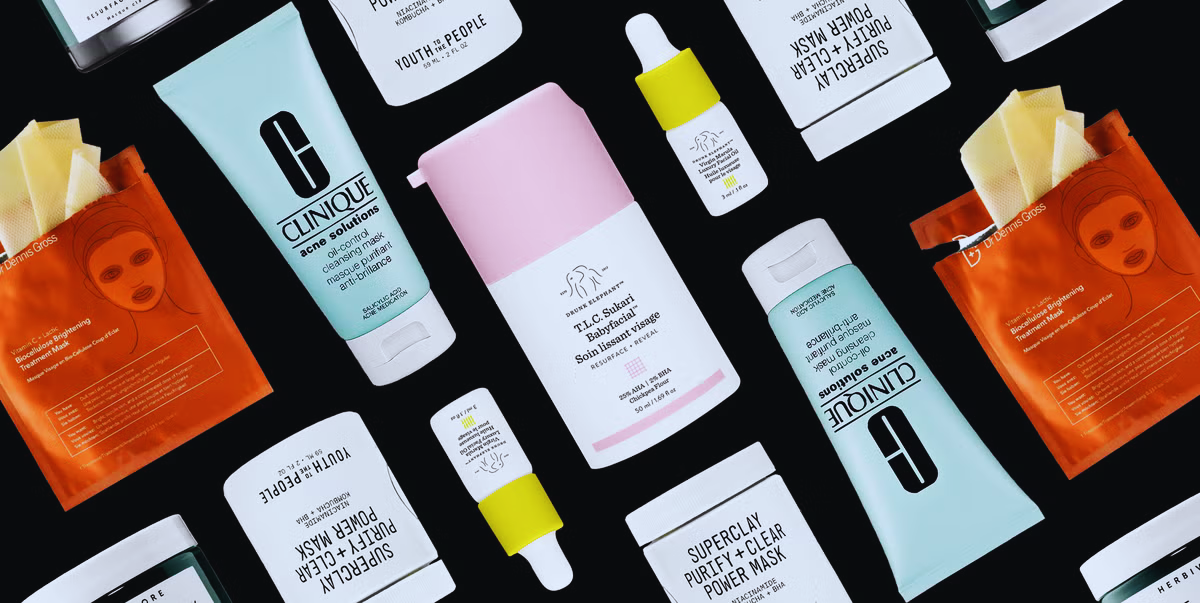We take the task of creating the ideal stack with great dedication, as ear piercings are an artistic medium. Though they are artistic and amusing, ear piercings need to be carefully considered. Not all ear piercings are created alike, after all; some require an abnormally extended healing period, while others call for more expensive jewelry or special attention.
We sought the professional advice of Johnny Pearce, a body piercer at Nine Moons Piercing, and Sarah Lacy, associate director of piercing research and innovation at Rowan, to help you choose which ear piercing to get next. Explore our thorough guide to the many different types of ear piercings by scrolling down to learn about their location, recovery period, estimated cost,
Ear piercings come in a variety of forms, each having its own placement and aesthetic. The most common type of piercing ear as follows:
The Most Typical Types of Ear Piercings:

1.Piercing by Lobe:
– The most conventional and typical kind, typically performed on the ear’s fleshy portion. Being less painful and easier to heal, it is frequently a person’s first piercing
2. Piercing the Helix:
Distinctive yet fashionable, this piercing is situated on the upper cartilage of the ear. It is well-liked by people who want to give their ears a distinctive touch and offers a variety of jewelry options.
3.Piercing Tragus:
– The tiny, oval-shaped cartilage at the ear canal’s entrance is used for this piercing. It is more intricate than Because more cartilage is involved, it can be a little more painful than a lobe piercing[2][3].
4. The Piercement of Daith:
This ear piercing, which is located in the inner cartilage of the ear, has become more well-known due to reports that it can help prevent migraines. Additionally, it gives the ear a unique appearance.
5. Piercing the Conch:
– The outer or inner conch of the ear can be treated in this way. It provides a striking appearance and works with a variety of jewelry types, such as studs and hoops.
6. Piercing the Root:
This piercing, which occurs in the upper portion of the ear, passes through the cartilage and is usually ornamented with a hoop or barbell. In contrast to lobe piercings, the healing process may take longer[2][3].
7. Clutching:
– A line that Owing to space restrictions in that region of the ear, this unusual piercing above the anti-tragus may not be appropriate for everyone.
8. piercing the orbit:
– This creates a unique design by joining two holes with a single piece of jewelry, frequently put in regions like the conch or helix[2].
9. Tragus Piercing Reduction:
This piercing, which is situated above the earlobe and passes through the cartilage, can hurt more because of how thick the cartilage is[2][3].
10. Piercing the transverse lobe:
– Unlike typical lobe piercings, a barbell is threaded through the earlobe from side to side, giving the appearance of a distinct piece[2].
In addition to being a means of self-expression, these piercings enable unique combinations and styling options, which feeds into the expanding “curated ears” trend.
The conclusion:
Selecting the ideal diamonds for your piercing isn’t the only thing to consider (though it’s certainly enjoyable); check out our selection of sustainable metals and stones below. Your unique ear anatomy should be considered as well as the degree of discomfort and healing time required—certain piercings just won’t work on particular angles and folds.
FAQS:
What kind of piercing hurts the most?
The daith, rook, and snug are the strongest for the ear. Furthermore, the tight piercing can be difficult to take care of and may cause excruciating soreness for several months afterwards. Genitalia, nipples, nose, and dermal piercings are thought to cause the most discomfort compared to other parts of the body.
What to do if you become infected?
Yellow pus discharge, swelling, redness, and soreness are signs of an infection in a piercing. If you get an infection from your piercing, use a warm compress to reduce swelling. Two or three times a day, gently rinse the region with the saline solution; do not twist, pull, or remove the piercing. Avoid using alcohol or antimicrobial creams as things will simply make the region more irritated. See a doctor if symptoms worsen and you have pain or possibly a fever after three days.
When will my ear piercing be changing?
After the original wound has healed, people can change their ear piercing, with varying lengths for each. That might be as short as six weeks for straightforward lobe piercings. It might last the entire year, if not longer, for daith, industrial, snug, or anti-tragus. Every body is unique, though, so you should speak with your piercer about when you can change it safely.
for more information visit our Homepage


